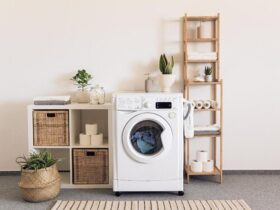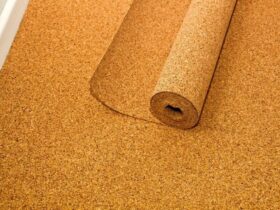The water supply of a private house is not easy to equip yourself, but it is quite real. For this, it is necessary to carefully study the regulatory requirements and generally accepted rules for the construction of such communications.
Water supply in the house — where and how to get water?
Video tips for laying water supply
One of the most important components of the comfortable existence of homeowners is the presence of a reliable water supply in the dwelling. In private houses, as a rule, underground waters are used. To do this, arrange wells or wells.
The necessary consumption is calculated by SNiP 2.04.01-85 and 2.04.02-84, however, based on statistical data, the actual consumption exceeds the calculated norms.
More real indicators can be found in various manuals. There you can also find specific recommendations for private households for the design and device of water supply systems.
Typical layout of the water supply in a private house
Video — Earthwork when installing water supply
After the necessary power of the system was determined, we develop a specific water supply scheme. It is not difficult to accurately calculate the total number of pipes and components. If everything is done correctly and carefully, then in the future you can avoid many mistakes and alterations.
At all stages of work, it is advisable to use the same measuring tool. Otherwise, there is a high probability of discrepancy in the values at the stages of drawing up a diagram and laying of a highway, and eliminating such errors is often a complex and costly task.
Any water supply system consists of external and intra -house. According to the standard water supply layer diagram, water from the water intake point is supplied through the check valve through the underground pipes to the house to the storage or water -beam (hydraulic accumulator), which is often placed in the attic. It can be located in the basement, but then additional pumps are required. Further, through the main pipe or collector, there is a wiring directly to the consumption points.
You can take a sequential connection or collector connection as the basis for the internal water supply circuit. The first option is used in small sparsely populated houses with a minimum set of plumbing. In this case, the main pipeline passes throughout the house, and in the right places it is made by individual bounces to each source of consumption.
The second option is relevant for houses with large water consumption and consists in the installation of diving to each consumer from the common collector. This is a more costly method that requires a significant number of pipes, but it makes it possible to maintain good pressure in any area of the pipeline.
In order for the subsequent installation of the water supply in a private house to become an accurate guide to action, it is necessary to try to carefully mark the entire set of equipment on it. In each case, it is individual, but basically it:
Pipe with wiring to plumbing devices and heating devices;
Cut valves and others. regulatory reinforcement;
pumps (surface or submersible);
water filters;
water tanks;
Automatic control blocks of pumps and heaters.
In order to minimize the consumption of pipes and simplify the service, to dig a well or drill a well is advisable to be closer to the house. At the same time, it must be borne in mind that the distance from the point of water is to such objects as cesspools, septic tanks, etc. p. should be at least 20 m.
The device of the water supply in a private house with your own hands according to an individual scheme
If there is desire and perseverance, the installation of a water supply system is a completely feasible task. The most difficult and dirty work will have to be done at the stage of pipe from the street to the room. Everything else will require only zeal and time spent.
First you need to determine how many and what pipes are required. They can be copper, metal -plastic, steel or polypropylene. The best, but the most expensive option is copper. Recently, polypropylene pipes have been most popular. Their installation is simple, and operation is quite reliable. The only inconvenience is that the pipes are connected by welding, for which special equipment is required, but such highways will serve faithfully up to half a century.
Given the fact that in a second water should overcome 2 m, it is necessary to choose pipes in accordance with the length of the highway. For example, for a length of more than 30 m, pipes with a diameter of 32 mm are suitable; less than 30 m — 25 mm, less than 10 m — 20 mm.
To a large extent, the successful device of the water supply house with your own hands depends on the diameter of the collector. It is calculated on the basis of the fact that in 1 minute from the crane should be poured from 5 to 6 liters of water. If a large family lives in the house, then often almost all points of water consumption (sink, bath, toilet, washing machine) will be operated simultaneously. To calculate the collector, it is necessary to calculate the total water consumption for all plumbing devices. For a small family from the resulting size, it is necessary to take 60-75 %.
After the completion of all calculations, we purchase the necessary components and carefully, step by step we mount the system according to the developed plan. To ensure the very system of the system, the horizontal sections of the pipeline are arranged with a slope of about 0.5 cm/m towards the fluid movement.













Оставить коммент.